Data processing information
Configure the data processing information settings.
In the DataMagic Management screen, click Data processing to display the Data Processing Information List screen, and then click the New button to display the Data Processing Settings screen. Configure the settings as described below and save them.
1. In the ID field, enter cnv24.
2. Configure the settings for the input file (C:\Examples\24\input\sampleIN24.csv).
Select an input file format in the Object palette, and then drag and drop it on the input area. Double-click the icon to display the Input Settings screen.
Configure the settings as shown below.
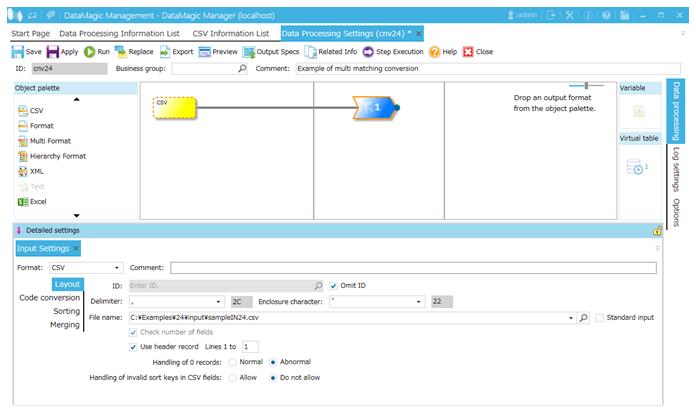
Screen 8.218 Input Settings screen
3. Configure the settings for the matching file A (omit ID).
Register the matching file A (sampleIN24A.csv).
1) Display the Matching Settings screen.
Right-click the input file area and click Add Matching File - CSV from the context menu. On the Matching Settings screen, configure the matching settings as shown below.
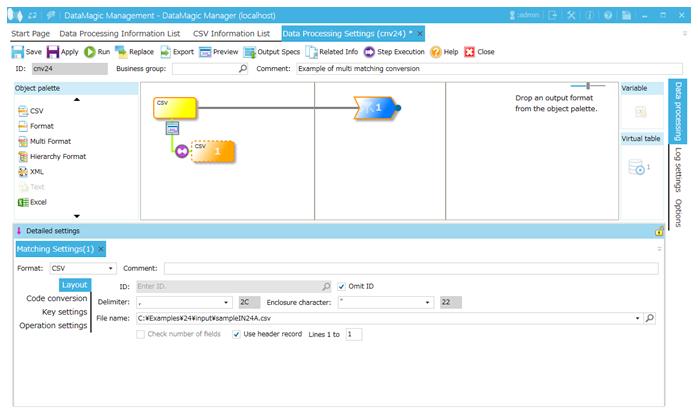
Screen 8.219 Matching Settings screen (Layout tab)
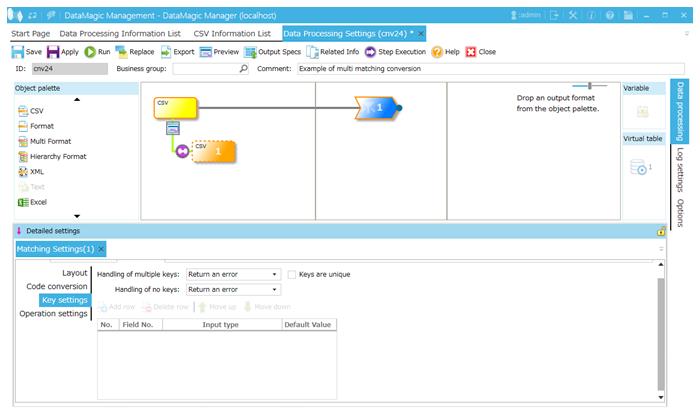
Screen 8.220 Matching Settings screen (Key settings tab)
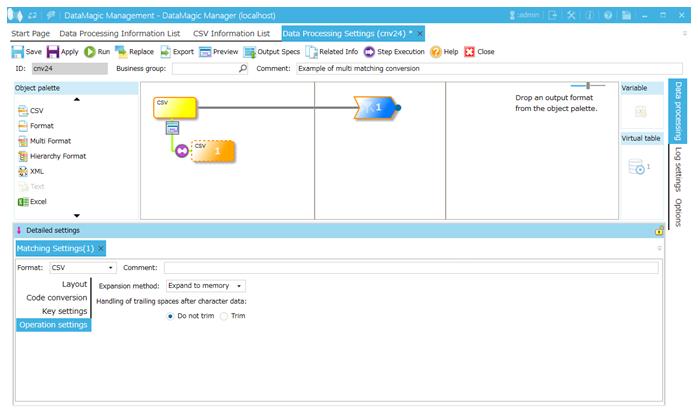
Screen 8.221 Matching Settings screen (Operation settings tab)
2) Set the matching condition.
Double-click the relation line between the Matching icon added in 1) and the Input icon. This displays the Matching Condition Settings screen.
Configure the settings as shown below and click the OK button.
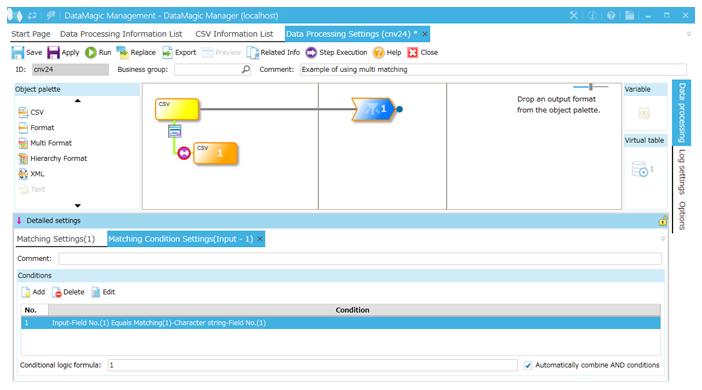
Screen 8.222 Matching Condition Settings screen
4. Configure the settings for the matching file B (ID omitted).
Register matching file B (sampleIN24B.csv).
1) Display the Matching Settings screen.
Right-click the matching file and click Add Matching File – CSV from the context menu.
On the Matching Settings screen, configure the matching settings as shown below. With the exception of the CSV file name, the settings are the same.
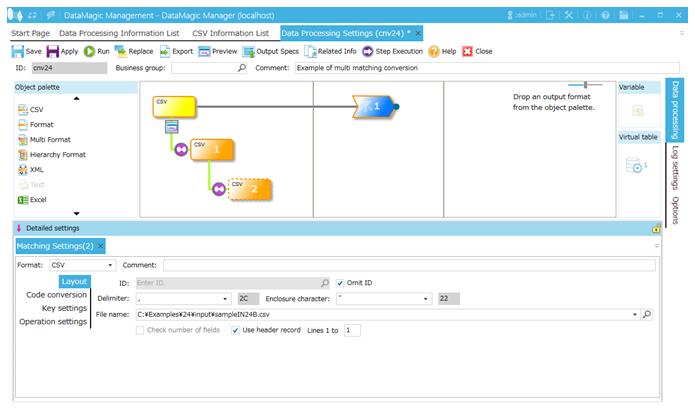
Screen 8.223 Matching Settings screen (Layout tab)
2) Set the matching condition.
Double-click the relation line between the Matching icon added in 1) and the Maching icon. This displays the Matching Condition Settings screen.
Configure the settings as shown below and click the OK button.
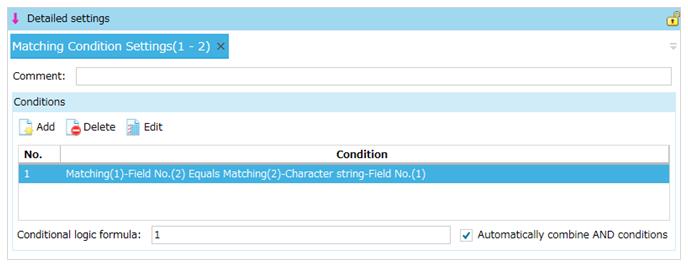
Screen 8.224 Matching Condition Settings screen
5. Configure the settings for matching file C (ID omitted).
Register matching file C (sampleIN24C.csv).
1) Display the Matching Settings screen.
Right-click the matching file and click Add Matching File – CSV from the context menu. On the Matching Settings screen, configure the matching settings as shown below.
On the Matching Settings screen, configure the matching settings as shown below. With the exception of the CSV file name, the settings are the same.
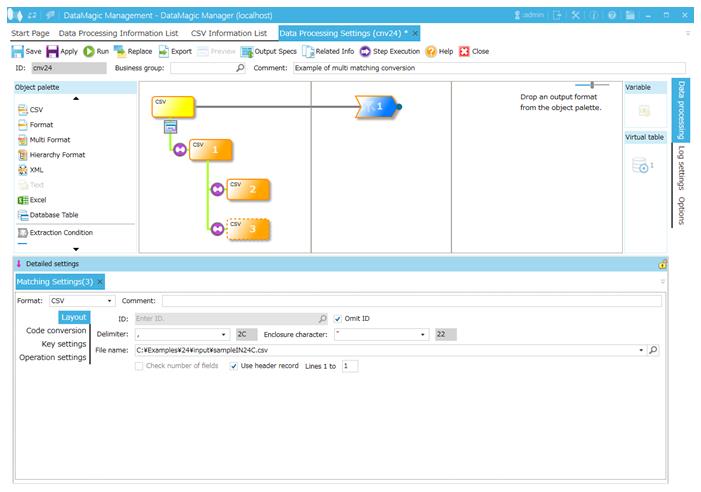
Screen 8.225 Matching Settings screen (Layout tab)
2) Set the matching condition.
Double-click the relation line between the Matching icon added in 1) and the Maching icon. This displays the Matching Condition Settings screen.
Configure the settings as shown below and click the OK button.
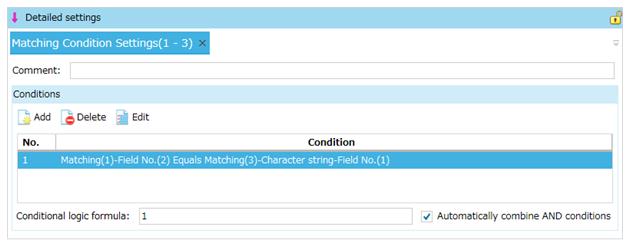
Screen 8.226 Matching Condition Settings screen
6. Configure the settings for the output file (C:\Examples\24\output\sampleOUT24.csv).
Select an output file format in the Object palette, and then drag and drop it on the output area. Double-click the icon to display the Output Settings screen.
Configure the settings as shown below.
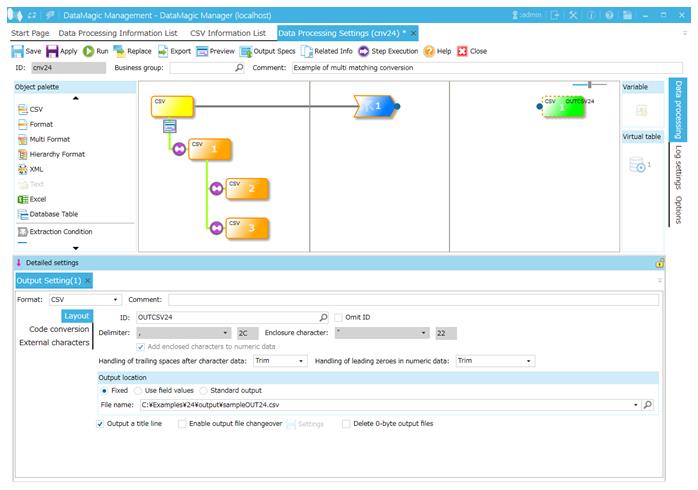
Screen 8.227 Output Settings screen
7. Link the extraction condition and output file.
Choose the Extraction Condition icon and drag and drop it onto the File icon on the right to draw a relation line.

Screen 8.228 Mapping of extraction conditions and output file
8. Specify the output format.
1) Display the Set Mapping Information screen.
Double-click the Mapping icon created on the relation line between the Extraction Condition icon and Output icon. This displays the Set Mapping Information screen.
2) Check the input-side tree view.
As shown in the screen below, input file field (ID=INCSV24) and matching file field (ID=INDB24) appear in the input-side (left) tree.
If the actual display varies from the following, check the ID settings and the settings for the input file or matching file.
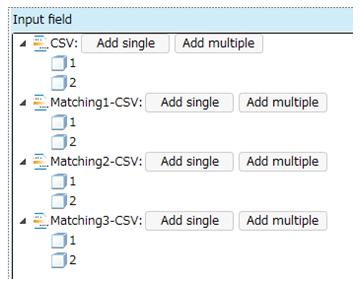
Screen 8.229 Input side tree
3) Check the output-side tree view.
The output-side (right) tree is displayed as follows.
If the actual display varies from the following, check the ID settings and input file settings.
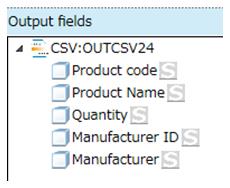
Screen 8.230 Output-side tree
4) Draw relation lines.
You can draw a relation line by dragging and dropping the field node in the left tree to the field node in the right tree. Draw relation lines as shown in the screen below.
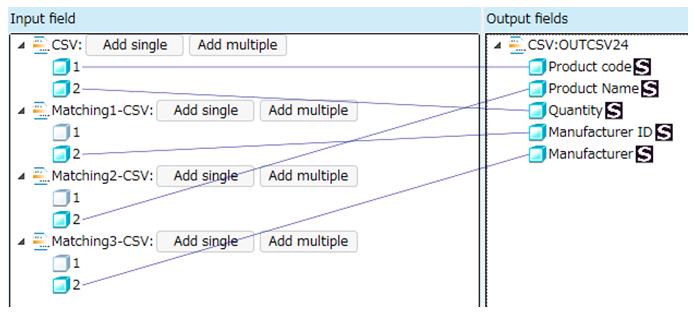
Screen 8.231 Input-Output relation lines
9. Click the Apply button to save the data processing information.